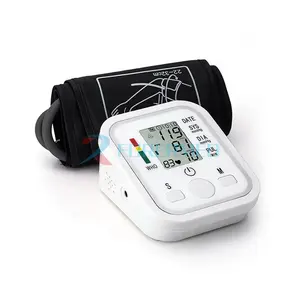Popolare nel tuo settore






Batteria Agli Ioni di litio Elettrodo Semi-Auto Bobina di Avvolgimento Macchina Per Elettrodo Batteria Assemblea Di Forma Cilindrica
1.390,47 € - 1.761,26 €
Ordine minimo: 1 insieme






Pemf magneto therapy dispositivo di terapia del campo elettromagnetico pulsato magnetoterapia pemf magnetic therapy pemf magnet machine
862,09 € - 954,79 €
Ordine minimo: 1 unità





2024 13 Tesla Ems 5 Handle Ems Neo Teslasculpt Max stimolatore muscolare macchina per scolpire il corpo
463,49 € - 3.244,43 €
Ordine minimo: 1 unità







La migliore vendita 3 in 1 per la cura del corpo antidolorifico PMST NEO Magnetic Therapy Machine attrezzatura per fisioterapia
1.574,94 € - 1.853,03 €
Ordine minimo: 1 parte







Viatom Th12 12 canali Ekg Cable Machine Portable Mini Holter Monitor Recorder 12 Lead Cardioline Ecg Machine elettrocardiografo
128,85 € - 184,47 €
Ordine minimo: 1 parte







2024 nuovo arrivo fisioterapico Terapia del dolore extracorporea di trasduzione magnetica Magneto Terapia Terapia magnetica macchina
1.967,05 € - 2.248,85 €
Ordine minimo: 1 parte






Cavo adattatore per connettori per macchina EEG Greentek-TP2DB25-adattatore per macchina per elettrodi EEG
60,26 €
Ordine minimo: 10 parti






Macchina EEG a 24/36/48/60 canali/elettroerosione digitale Neurofeedback EEG
1.853,96 € - 2.780,94 €
Ordine minimo: 1 parte






Vendita calda Besdata Nylon 32 Canale cappello cuffia cappello medico per eeg macchina senza eeg elettrodi
13,91 € - 60,26 €
Ordine minimo: 1 parte






Elettrodi emg EEG a secco electroccap per apparecchiature per dispositivi eeg machine 24 32 64 canali amplificatore prezzo eeg headset cable headband
2.410,15 € - 2.780,94 €
Ordine minimo: 1 unità






Elettrodo conduttivo Clip per orecchio EEG cavo Clip per orecchio 1.5m
0,4913 € - 0,5192 €
Ordine minimo: 100 parti






Macchina EEG a 24/32/64 canali/elettroerosione digitale EEG attrezzatura medica portatile
1.853,96 € - 2.780,94 €
Ordine minimo: 1 parte
Ricerche correlate:
elettrodi eegelettrodi eeg in venditavendita di elettrodi eegelettrodi del ecg eegmacchina ad alta frequenza degli elettrodielettrodi eeg asciuttimacchina dell'elettrodo usatoelettrodi monouso eegmacchina dell'elettrodo medicosistema di elettrodo eeg secco attivoestrusore elettrodoelettrodo coagulatorebuon prezzo eeg elettrodoelettrodi di eeg della cinafornitore di elettrodi eeg






Produttore cappello medico sinterizzato Ag/AgCl 19 canali EEG elettrodo copricapo per macchina EEG
138,12 € - 212,28 €
Ordine minimo: 1 insieme






2022 vendita calda Neurofeedback placcatura in oro elettrodi EEG e cavo in TPU con filo di trazione per macchina EEG clinica o cappello EEG
18,54 € - 27,81 €
Ordine minimo: 10 pacchetti






Elettrodi per brain eeg machine device equipment portatil 24 32 64 canali prezzo cavo auricolare mobile brain sensor amplifier
2.410,15 € - 2.780,94 €
Ordine minimo: 1 unità






Cavo bipolare elettrochirurgico medico Ecg Ekg cavo Eeg elettrodo cavo a scatto per apparecchiature mediche
1,07 € - 1,35 €
Ordine minimo: 200 unità






Cavo dell'elettrodo EEG con clip per orecchio Ag/AgCl riutilizzabile medico Greentek compatibile con la macchina EEG Natus
9,27 € - 18,54 €
Ordine minimo: 200 parti






BESDATA 2022 elettrodi EEG di Neurofeedback della macchina EEG della tazza timbrata Ag puro riutilizzabile del venditore caldo per uso clinico
4,64 € - 9,27 €
Ordine minimo: 1 parte






EEG Neurofeedback elettrodo sensore auricolare; Produttore sinterizzato Ag/AgCl 128 canali EEG cappello medico per macchina EEG
556,19 € - 1.390,47 €
Ordine minimo: 1 parte






Macchina semi-asciutta compatibile del EEG del bordo di OpenBCI, cuffia avricolare dell'elettrodo di EEG di Gelfree-S3
417,15 € - 740,66 €
Ordine minimo: 1 insieme




Elettrodo a superficie secca in polimero morbido Greentek per macchina EEG
4,64 € - 7,42 €
Ordine minimo: 100 parti






Greentek Baby EEG Headset EEG elettrodo macchina di registrazione auricolare per neonati prematuri
91,78 € - 147,39 €
Ordine minimo: 10 insiemi

Macchina EEG digitale portatile a 32 canali YSEEG3200
1.112,38 € - 1.853,03 €
Ordine minimo: 1 insieme






All'ingrosso della fabbrica di elettrodi in Silicone nero clip per le orecchie di decine unità di fisioterapia macchina
0,7602 € - 1,04 €
Ordine minimo: 500 parti
Spedizione per pezzo: 3,08 €




EEG mappatura topografica strumento tappo elettrodo tappo di macchina EEG 1PC
27,07 € - 33,84 €
Ordine minimo: 1 unità






Assemblaggio Clip auricolare cavo Mini B USB per auricolari filo per Digital ten massaggio fisioterapia Clip orecchio EEG elettrodi cavo
0,445 € - 2,18 €
Ordine minimo: 100 parti
Spedizione per pezzo: 0,9919 €






Tuta da allenamento ems per terapia di riabilitazione con stimolazione elettrica ad elettrodo tessile ad alta tecnologia
556,19 € - 880,63 €
Ordine minimo: 5 parti
Spedizione per pezzo: 8,80 €












EEG ECG Medical Snap 3.5 3.9 elettrodo 4.0mm pulsante magnetico maschio per elettrodi filo conduttore
0,0835 € - 0,1854 €
Ordine minimo: 1000 parti
Spedizione per pezzo: 0,3245 €






Su misura 4 cavi in PVC EEG filo filo a scatto femmina a connettore audio elettrodi cavo medicale personalizzato
3,62 € - 4,18 €
Ordine minimo: 500 parti
Spedizione per pezzo: 0,1854 €






Elettroencefalogramma digitale branina digitale mappatura attività elettrica elettroencefalogramma ospedale 16 elettroencefalogramma
509,84 € - 926,98 €
Ordine minimo: 1 unità






Dispositivo portatile degli elettrodi di digital di ECG della macchina ECG del EEG del produttore professionale MSLEEG-P per uso del laboratorio
393,97 € - 463,49 €
Ordine minimo: 1 insieme






Elettrodo per saldatura per AI-7 AI-7S AI-7C AI-7V AI-8 AI-8C AI-9 elettrodi per giuntatrice a fusione asta
48,21 € - 74,16 €
Ordine minimo: 1 parte









Elettrodo di saldatura per AI-7 AI-7S AI-7C AI-7V AI-8 AI-8C AI-9 fusione Splicer elettrodi asta
5,57 € - 6,49 €
Ordine minimo: 1 coppia
Spedizione per pezzo: 4,39 €




Cuffie per elettrodi EEG a 19 canali adatte a tutte le macchine EEG di alta precisione con sensori AgCl
156,66 € - 203,01 €
Ordine minimo: 1 parte






YSEEG3200 buon prezzo macchina EEG per elettroerosione digitale portatile a 32 canali
1.066,03 € - 1.760,34 €
Ordine minimo: 1 insieme





Abbigliamento elettrodo YDSTRONG sport all'ingrosso EMS Fitness Machine
92,70 € - 278,10 €
Ordine minimo: 50 parti
Migliori categorie
Su macchina degli elettrodi eeg
Cercare macchina degli elettrodi eeg. su Alibaba.com per l'utilizzo in un ospedale o in una clinica medica. Vari tipi sono disponibili per la vendita per aiutare con la riabilitazione fisica e lo spostamento di pazienti anziani o disabili in luoghi diversi. Trova macchina degli elettrodi eeg. che può essere utilizzato per sollevare i pazienti dentro e fuori da un letto d'ospedale. Anche gli operatori sanitari dei pazienti a casa possono trovare utili tali dispositivi.
Con macchina degli elettrodi eeg, il sollevamento è facile grazie al sedile a forma di amaca. Il sedile-amaca di ogni modello è appeso a un braccio che può essere alzato o abbassato con robusta precisione. Ogni unità è imbottita per mantenere il paziente comodo e sicuro. I manubri consentono una presa salda e una spinta e una sterzata più confortevoli del sollevatore. Altri dispositivi includono barelle e tavole spinali che mantengono il paziente piatto. Usali per servizi di emergenza o operazioni di soccorso.
Fornitori di macchina degli elettrodi eeg. su Alibaba.com offrono molte opzioni di gamma di ascensori tra cui scegliere. Alcuni possono cambiare il colore del cuscino o della barella se richiesto. La maggior parte dei design sono facili da usare nelle mani di un professionista qualificato e sono costruiti per durare attraverso diversi usi. Diversi modelli di ascensori sono progettati per essere azionati manualmente, anche se alcune versioni elettriche possono sollevarsi automaticamente, richiedendo uno sforzo fisico minore.
Cerca macchina degli elettrodi eeg. su Alibaba.com e trova le migliori offerte per articoli di qualità che semplificheranno il lavoro in ospedale. Trova una vasta gamma di prodotti che i paramedici e gli EMT possono utilizzare, oltre a quelli realizzati per medici e infermieri. Ottieni tutte le unità necessarie e goditi risparmi significativi.
Con macchina degli elettrodi eeg, il sollevamento è facile grazie al sedile a forma di amaca. Il sedile-amaca di ogni modello è appeso a un braccio che può essere alzato o abbassato con robusta precisione. Ogni unità è imbottita per mantenere il paziente comodo e sicuro. I manubri consentono una presa salda e una spinta e una sterzata più confortevoli del sollevatore. Altri dispositivi includono barelle e tavole spinali che mantengono il paziente piatto. Usali per servizi di emergenza o operazioni di soccorso.
Fornitori di macchina degli elettrodi eeg. su Alibaba.com offrono molte opzioni di gamma di ascensori tra cui scegliere. Alcuni possono cambiare il colore del cuscino o della barella se richiesto. La maggior parte dei design sono facili da usare nelle mani di un professionista qualificato e sono costruiti per durare attraverso diversi usi. Diversi modelli di ascensori sono progettati per essere azionati manualmente, anche se alcune versioni elettriche possono sollevarsi automaticamente, richiedendo uno sforzo fisico minore.
Cerca macchina degli elettrodi eeg. su Alibaba.com e trova le migliori offerte per articoli di qualità che semplificheranno il lavoro in ospedale. Trova una vasta gamma di prodotti che i paramedici e gli EMT possono utilizzare, oltre a quelli realizzati per medici e infermieri. Ottieni tutte le unità necessarie e goditi risparmi significativi.













